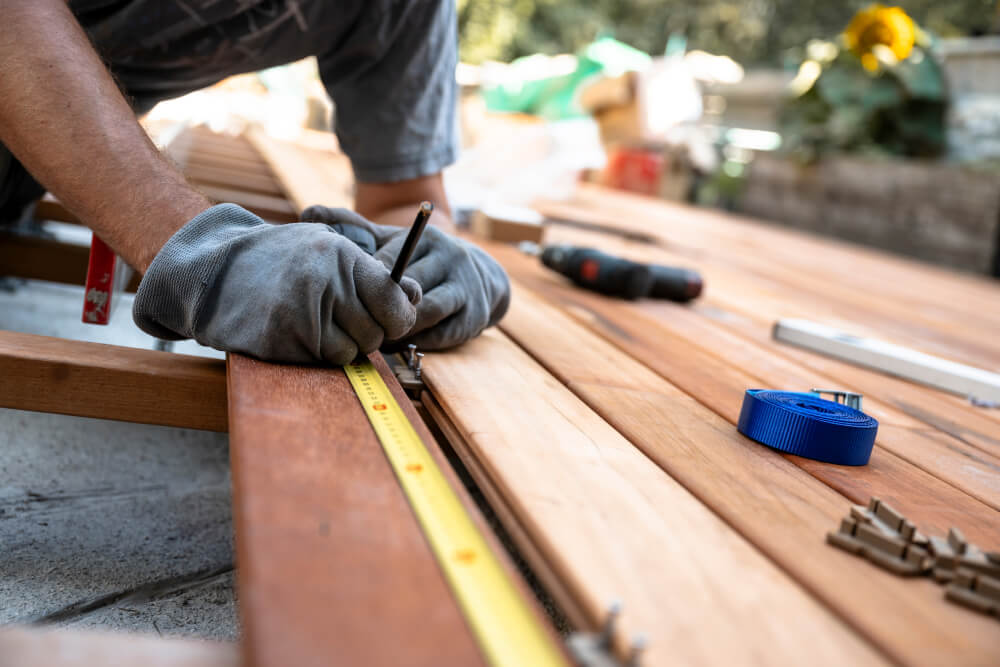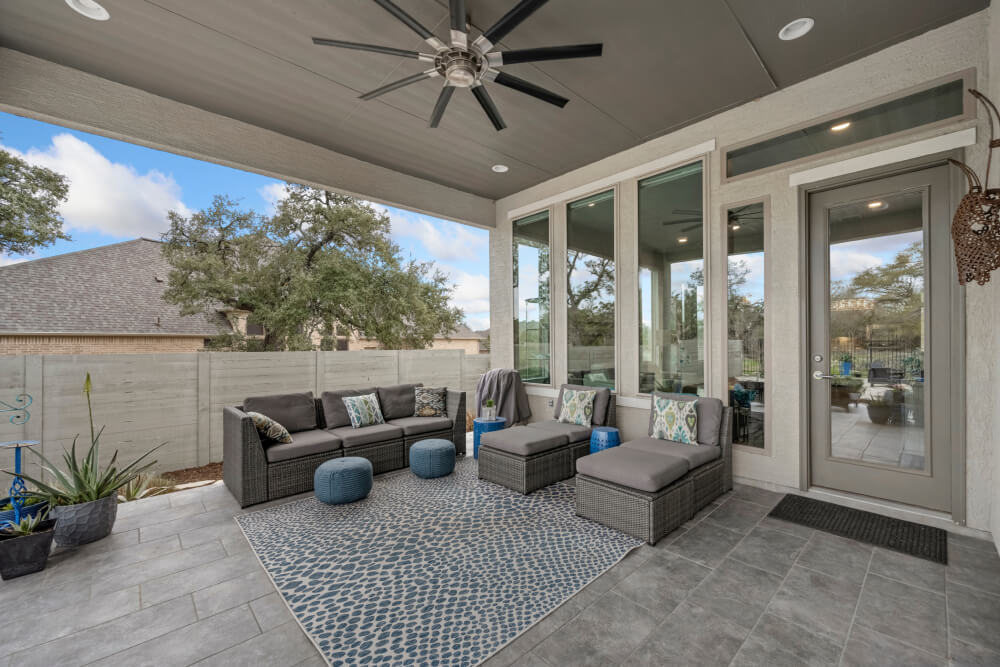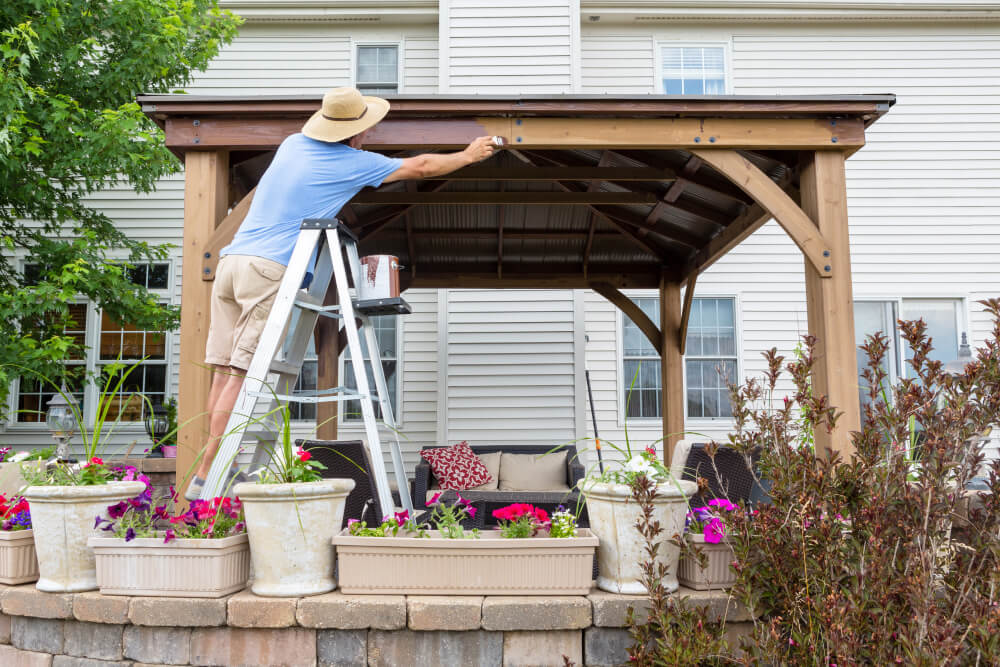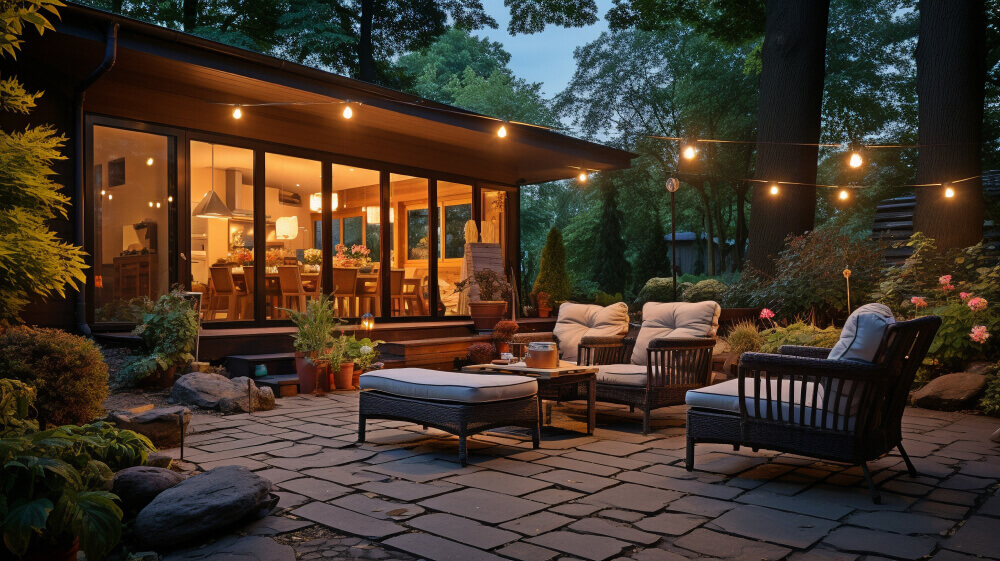The Importance of Eco-Friendly Choices
Eco-friendly patio covers offer numerous benefits, including:
- 1. Reduced Environmental Impact: Sustainable materials and designs help minimize resource depletion and environmental degradation.
- 2. Energy Efficiency: Properly designed patio covers can reduce energy consumption by providing natural shade and reducing the need for air conditioning.
- 3. Healthier Living Environment: Eco-friendly materials are often free from harmful chemicals and toxins, creating a healthier outdoor space.
- 4. Increased Property Value: Sustainable home improvements can enhance property value and appeal to environmentally conscious buyers.
Sustainable Materials for Patio Covers
Choosing the right materials is crucial for creating an eco-friendly patio cover. Here are some sustainable material options to consider:
1. Reclaimed Wood Benefits:- Environmentally Friendly: Reclaimed wood is sourced from old buildings, barns, and other structures, reducing the need for new timber and minimizing deforestation.
- Unique Aesthetic: Reclaimed wood offers a rustic, weathered look that adds character and charm to your patio cover.
- Durability: Often more durable and stable than new wood due to its age and exposure to the elements.
- Source Verification: Ensure the wood is genuinely reclaimed and not falsely marketed as such.
- Treatment: Reclaimed wood may require treatment to remove old paint, nails, and other impurities.
- Rapid Growth: Bamboo is a fast-growing renewable resource, making it a highly sustainable option.
- Strength and Flexibility: Bamboo is strong, flexible, and resistant to cracking, making it ideal for patio covers.
- Aesthetic Appeal: Bamboo provides a natural, tropical look that complements various outdoor designs.
- Local Availability: Ensure bamboo is sourced locally or from sustainable suppliers to reduce transportation emissions.
- Treatment: Bamboo may need treatment to enhance its durability and resistance to pests and weather.
- Durability: Recycled metal, such as aluminum or steel, is highly durable and can withstand harsh weather conditions.
- Recyclability: Metal can be recycled repeatedly without losing its quality, making it a sustainable choice.
- Low Maintenance: Recycled metal requires minimal maintenance, reducing the need for frequent replacements and repairs.
- Heat Retention: Metal can retain heat, making it hot to the touch in direct sunlight. Proper design and insulation can mitigate this issue.
- Rust Prevention: Ensure the metal is treated or coated to prevent rust and corrosion.
- Recycled Content: Composite materials are often made from recycled plastic and wood fibers, reducing waste and resource consumption.
- Durability: Resistant to rot, mold, and insect damage, composite materials are highly durable and low-maintenance.
- Variety of Styles: Available in various colors and textures, composite materials can mimic the look of wood, stone, and other natural materials.
- Cost: Composite materials can be more expensive than traditional options, but their durability and low maintenance can offset the initial investment.
- Recyclability: Ensure the composite material is recyclable at the end of its life cycle to maximize its sustainability.
Join HICP Homeowner’s Alliance
Connect with experts, get special discounts and enjoy member benefits
Eco-Friendly Design Options
In addition to choosing sustainable materials, incorporating eco-friendly design elements can further enhance the sustainability of your patio cover:
1. Solar Panels Benefits:- Renewable Energy: Solar panels generate clean, renewable energy, reducing reliance on fossil fuels and lowering your energy bills.
- Dual Functionality: Integrating solar panels into your patio cover provides both shade and power generation.
- Initial Cost: The upfront cost of solar panels can be high, but long-term energy savings and potential incentives can offset this expense.
- Sun Exposure: Ensure your patio cover receives adequate sunlight for optimal solar panel performance.
- Natural Insulation: A living roof, or green roof, provides natural insulation, reducing heat transfer and improving energy efficiency.
- Biodiversity: Living roofs create habitats for plants, insects, and birds, enhancing local biodiversity.
- Stormwater Management: Green roofs absorb rainwater, reducing runoff and improving water management.
- Structural Support: Ensure your patio cover structure can support the additional weight of a living roof.
- Maintenance: Regular maintenance is required to keep plants healthy and prevent overgrowth.
- Flexibility: Retractable awnings provide adjustable shade, allowing you to control sunlight and airflow.
- Energy Savings: By reducing direct sunlight, retractable awnings can lower indoor temperatures and reduce air conditioning needs.
- Protection: Retractable awnings protect outdoor furniture and flooring from sun damage and fading.
- Durability: Choose high-quality materials and mechanisms to ensure the longevity and reliability of retractable awnings.
- Manual vs. Motorized: Consider whether you prefer manual or motorized operation based on convenience and budget.
- Natural Shade: Climbing plants such as ivy, wisteria, and grapevines provide natural shade and cooling, reducing the need for artificial cooling.
- Aesthetic Appeal: Pergolas with climbing plants create a beautiful, green, and inviting outdoor space.
- Air Quality: Plants improve air quality by absorbing carbon dioxide and releasing oxygen.
- Plant Selection: Choose native or drought-tolerant plants to minimize water usage and maintenance.
- Structural Support: Ensure the pergola is strong enough to support the weight of mature climbing plants.
Tips for Sustainable Patio Cover Installation
When installing an eco-friendly patio cover, consider these additional tips to maximize sustainability:
- 1. Local Sourcing: Source materials locally to reduce transportation emissions and support local businesses.
- 2. Energy-Efficient Lighting: Use energy-efficient LED lighting for your patio cover to reduce energy consumption.
- 3. Water Conservation: Incorporate rainwater harvesting systems to collect and reuse rainwater for irrigation.
- 4. Sustainable Construction Practices: Choose contractors who use sustainable construction practices, such as waste reduction and recycling.
- 5. Use of Eco-Friendly Finishes: Select non-toxic, low-VOC paints, stains, and finishes to protect your health and the environment.
Creating an eco-friendly patio cover is a smart and sustainable choice that benefits both your home and the environment. By selecting sustainable materials like reclaimed wood, bamboo, recycled metal, and composite materials, and incorporating eco-friendly design elements such as solar panels, living roofs, retractable awnings, and pergolas with climbing plants, you can enhance your outdoor space while minimizing your environmental impact. Additionally, following sustainable installation practices ensures that your patio cover project is as green as possible. Embrace these eco-friendly options to create a beautiful, functional, and environmentally responsible outdoor living area.








